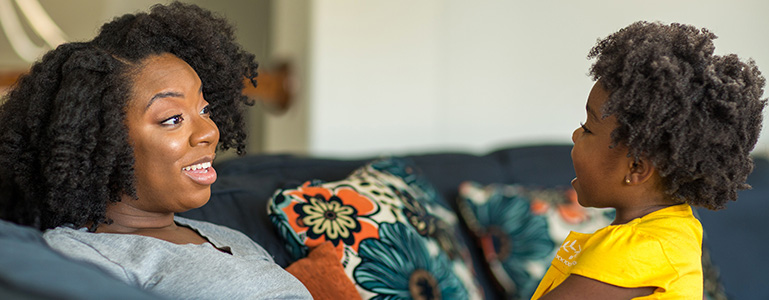Understanding Your Child’s Behavior
Knowing when and how to set appropriate and effective boundaries with kids is always a challenge. What is the appropriate consequence for this behavior? Should I be bothered by this behavior or not? How should I respond when my child hits me? As parents, we are constantly questioning ourselves and looking for the “magic bullet” to end the uncomfortable situation as quickly and permanently as possible. The reality is that there is no “magic bullet”.
All behavior in young children is created by the convergence of three things:
- Where the child is DEVELOPMENTALLY—what skills do they have based on their age and developmental level?
- Who the child is TEMPERAMENTALLY—how do they respond to the world? Are they very intense or easy going? Are they very outgoing and adaptable or slower to warm and easily overwhelmed?
- What is happening in the ENVIRONMENT—both around the child and internally for the child? Are they tired, hungry, sick, or overstimulated? Are things in their life changing at the moment—a new baby, a big move, or big changes to routines?
Young children are just BEING in the moment. They are responding to these three aspects of themselves and responding in whatever way comes naturally to them at that time. This is why it is helpful to have a toolbox full of different positive discipline techniques for setting boundaries with kids.
Positive Discipline Techniques to Try at Home
With multiple positive discipline techniques at your fingertips, you will be more likely to find the one that works in that moment for that particular situation:
- DISTRACTION works best with younger children. Often, turning a conflict into a game or making it into something funny will encourage a child to cooperate with you.
- REDIRECTION is universally the most effective tool in the toolbox. Tell your child what you want them to do rather than what you don’t want them to do. Notice what your child is trying to achieve and tell them how they can do that in an appropriate way. Instead of “Don’t run in the house!” say, “Let’s go outside where you can run around as much as you want!” or “Please use your walking feet inside and running feet outside”.
- GIVING CHOICES helps children feel empowered and in control, which encourages them to cooperate. Offer limited choices and make sure they are equally acceptable to you. If your child won’t make a choice, follow through by choosing for them. “Would you like to brush your teeth in the upstairs or downstairs bathroom?”
- NATURAL AND LOGICAL CONSEQUENCES help children understand the cause and effect of their behavior. Natural consequences are a great way to learn—“If you won’t wear a sweater you will get cold”. Logical consequences must be related and closely tied to the behavior, as well as reasonable and respectful—“If you won’t turn off the iPad when the timer goes off, you won’t be able to use it tomorrow”.
- ACTIVE PROBLEM-SOLVING allows parents and children to identify conflicts, listen to each other’s perspectives, set boundaries, brainstorm solutions, and follow through with a plan for success. Family Meetings are a great time to work on problem-solving.
- POSITIVE TIME OUT helps children learn strategies for calming their intense emotions. Ideally, they have participated in the creation of a comfortable, cozy space where they can go and access tools that they have found to be comforting and relaxing for them.
- INCENTIVES can help motivate children to try something new or change behavior when used very specifically and on a limited basis. They work best with children over the age of three and need to be kept very simple and specific.
You will find tools 1 — 4 to be useful most often for everyday types of challenges. Save the last three tools for behaviors that are more serious or persistent and when the first four seem not to be very effective. The more adept you are at trying a new positive discipline technique, the more successful you will be. Don’t throw out a tool just because it didn’t work one time. It may be the “magic bullet” tomorrow or next year! Try to keep in mind that the word “discipline” comes from the word “disciple”, which means “to teach”. You are teaching your children new skills of self-regulation by having good, clear, consistent, age- appropriate limits and routines at home.
Additional Support for Setting Boundaries With Kids
If you need support or guidance about how to implement these positive discipline techniques or any other challenges you may be experiencing as a parent, Parents Place is here for you! We offer workshops online and in person on Positive Discipline and many other topics. We also work with you individually to help you be the parent you want to be. Check us out at www.parentsplaceonline.org or call 650-688-3046.
Seeking other resources to help your child thrive? Attend a workshop, schedule a parent education meeting, or schedule an assessment with one of the Child and Adolescent Specialists at the Center for Children and Youth.
Stephanie Barry Agnew is the Assistant Director of CCY’s Parents Place program. She teaches classes on preschool, kindergarten, and elementary school choices; positive discipline; and behavior management for young children. She also leads teacher training workshops, consults with families on many parenting and child development issues, and observes children in their homes and at their schools. Stephanie can be reached at [email protected].



